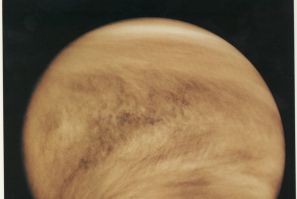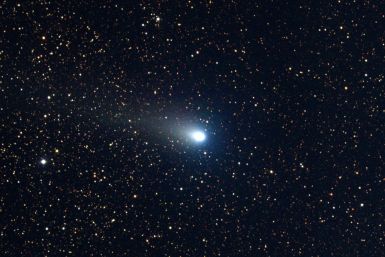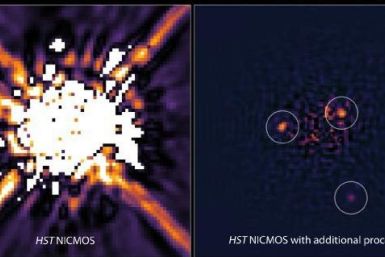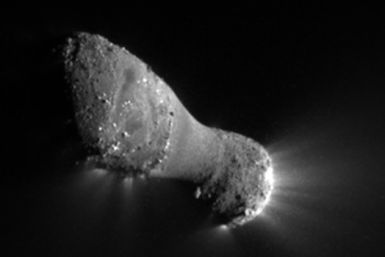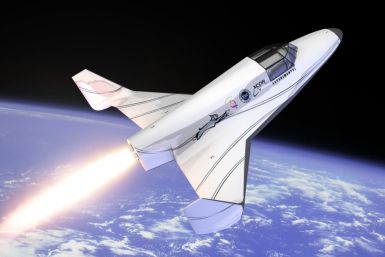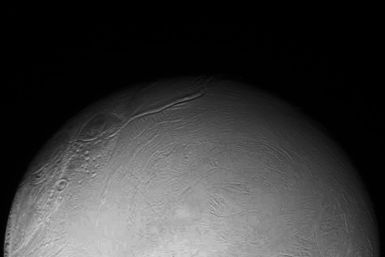The European Space Agency is planning to send a probe closer to the sun than has ever been attempted. The ambitious space mission is expected to happen in 2017, ESA delegates meeting in Paris announced recently.
The Draconid meteor shower is expected to begin its display Saturday, and it may peak between 3 p.m. and 5 p.m. Eastern Daylight Time.
The Draconid meteor shower will peak on Saturday with an estimated 750 meteors per hour, which is sure to impress observers in the Middle East, north Africa and parts of Europe.
An international team of scientists has detected pulsed gamma-ray emissions from the Crab pulsar at far higher energies than expected.
NASA will start accepting applications for its next class of astronaut candidates in November according to anew announcement it has made.
After conducting a thorough re-analysis of decade-old images from the Hubble Space Telescope using new techniques, Scientists have found visual evidence for two extrasolar planets that went undetected in 1998.
Pulsed gamma rays from the neutron star at the heart of the Crab Nebula with energies far higher than theoretical pulsar models can explain has been detected by scientists.
Astronomers have uncovered two elusive extrasolar planets that went undetected in image data from the Hubble Space Telescope for 13 years. The scientists painstakingly re-analyzed Hubble images from 1998 and stumbled upon visual evidence that the two planets went undetected back then.
The first comet containing water similar to Earth's oceans has been discovered by a team of astronomers using the European Space Agency's Herschel Space Observatory.
Private sector companies working on sending people into space, but progress is slow.
Imagines of Saturn's Moon Enceladus captured by NASA's Cassini spacecraft suggest it may have a liquid ocean underneath its snowy surface that could make it possible to support alien life.
NASA administrator Charles Bolden calls for more international cooperation.
The 100-Year Starship Symposium blasted off in Orlando Florida with discussions ranging from what type of vehicle could star trek to procreating in space.
NASA leaders are moving forward with discussion on acquisition plans for the agency's Space Launch System (SLS), which they say will create high-quality jobs in America.
Analysis of new observations from NASA's infrared space telescope shows that there are fewer near-Earth asteroids that are large enough to destroy the planet than previously thought.
Mercury, the tiny rocky planet closest to the sun, may have a lot common with Earth, but a spacecraft sent to the least-explored planet in the system is providing surprising data that has revolutionized the way scientists think about the innermost planet.
As millions of viewers tuned in to watch the Tiangong 1 space lab launch on China's state-run CCTV, they were treated to a bizarre musical selection: America the Beautiful.
China isn't the only country eyeing a Heavenly Palace. Several developing nations are also creating space agencies and building rockets in hopes that one day they, too, may have citizens in space.
The latest observations by NASA's NEOWISE mission that mapped the entire sky are suggesting that there are lesser likely threatening asteroids in the solar system than previously thought.
New observations by a NASA space telescope that mapped the entire sky suggest that there are fewer potentially threatening asteroids in the solar system than previously thought.
The first Chinese unmanned space laboratory Tiangong-1, meaning Heavenly Palace-1, was successfully shot into space Tuesday, paving the way for China to become the third country after the U.S. and Russia to run a permanent space station.
China has embarked on a plan to launch a new space lab on Thursday beginning with the lift off of its 8.5-ton Tiangong-1 space module. Developing nations across the world are launching space and science research that could put them on the path to charting their own future.






